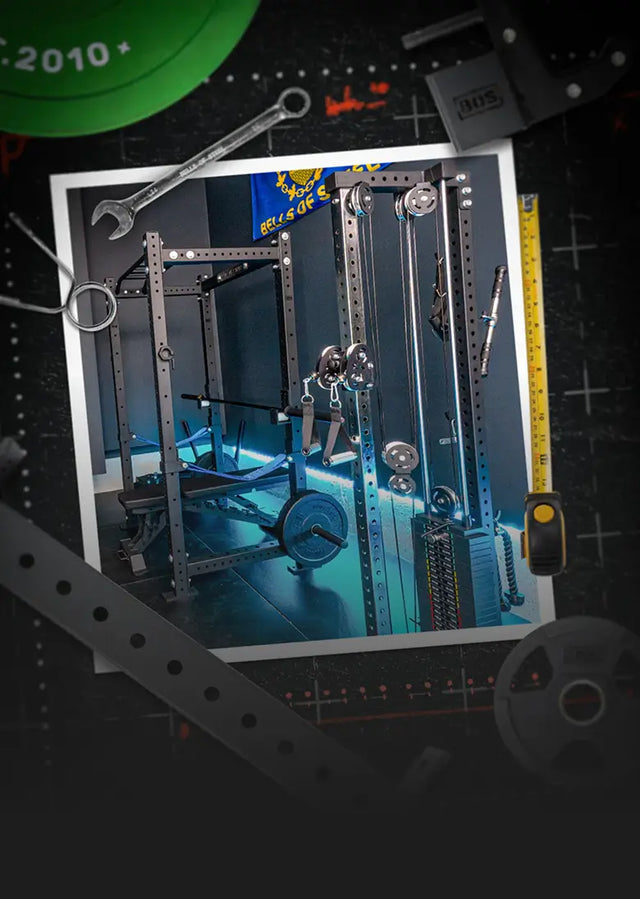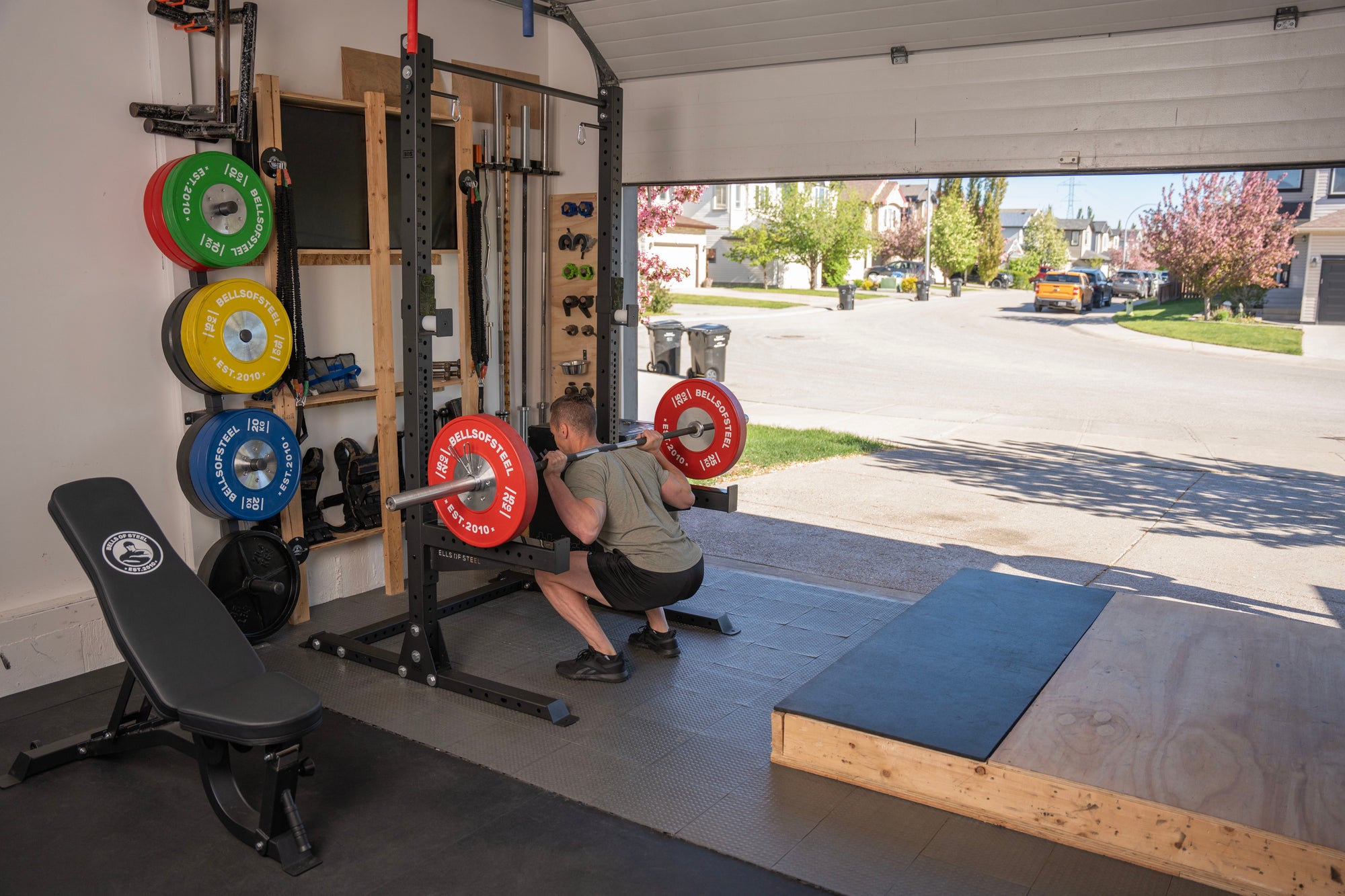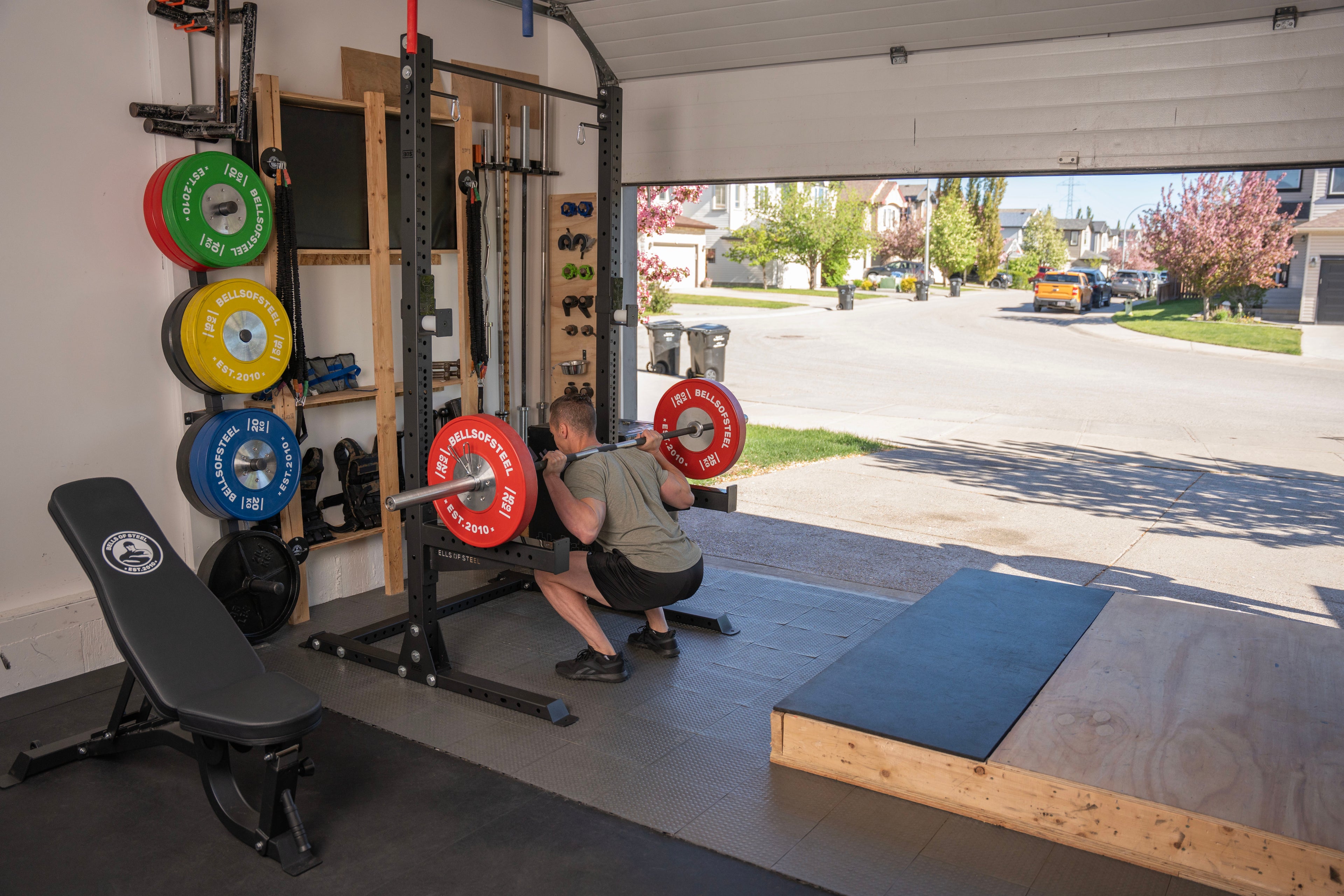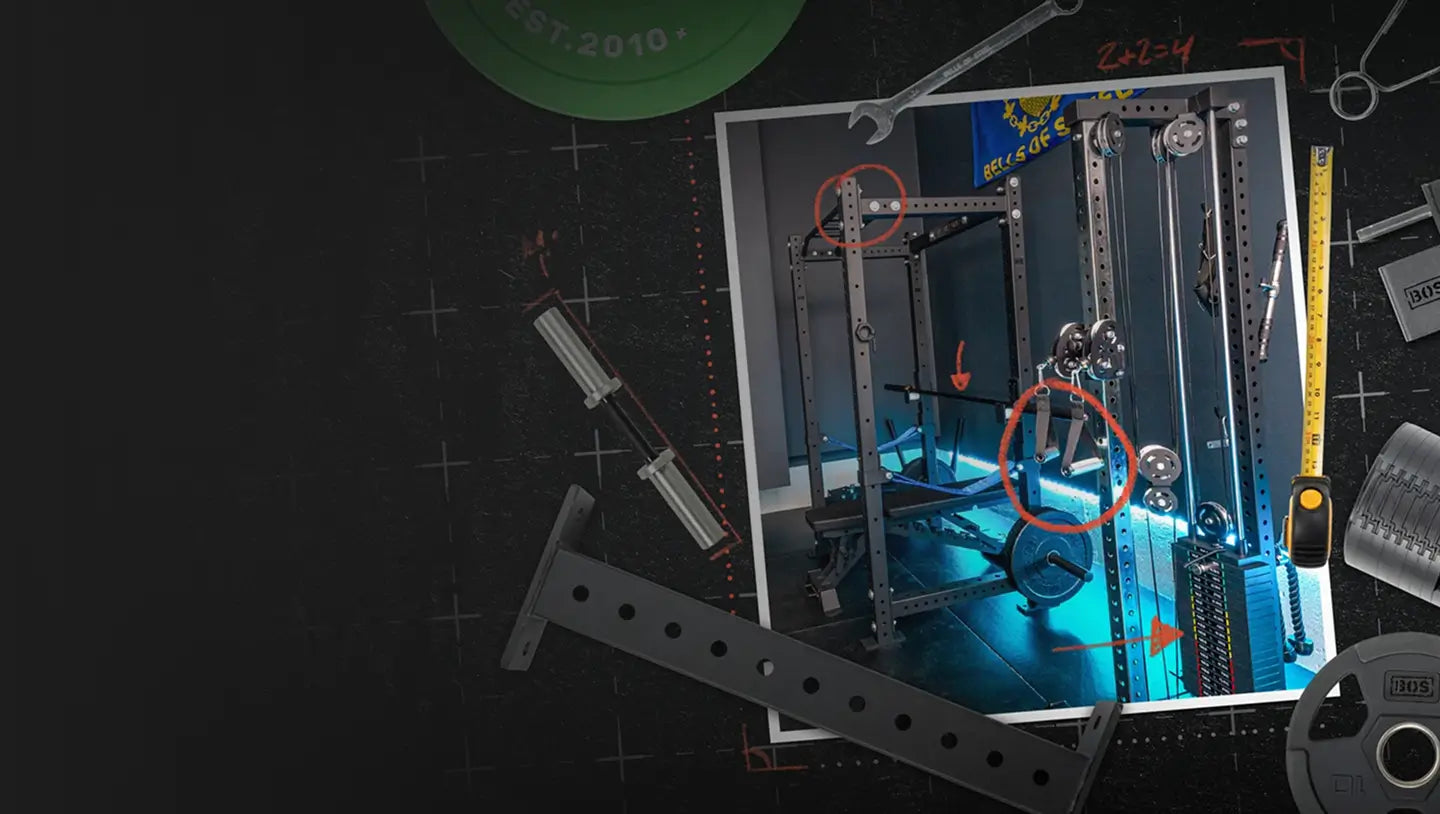
Find Your Perfect Power Rack
From compact squat stands to modular six-post monsters — choose the Bells of Steel rack that fits your space, goals, and budget.
Three Series. Zero Guesswork.
Every Bells of Steel rack falls into one of three series. Here's what makes each one unique.
Squat Stands

Best For: Experienced lifters who know how to bail safely
Footprint: Smallest
Safety: External spotter arms only (60x60 version has no safety)
Pros:
- Minimal Space Required
- Easy to move
- Lowest cost
Cons:
- No built-in safety (beginners should avoid 60x60 version)
- Less stable
- Tippy under heavy loads
Half Racks

Best For: Small garages with some wall space
Footprint: Compact
Safety: Moderate—typically squat/bench outside the rack
Pros:
- More stable than squat stands
- Plate storage included
- Room for rack pulls
Cons:
- No full enclosure
- Less safe than 4-post
4-Post Power Racks

Best For: Most home gym owners
Footprint: Medium-Large
Safety: Full cage—train inside with confidence
Pros:
- Full safety cage
- Maximum attachment support
- Can add spotter arms for dip station
- Available in flat-foot (no bolting) or standard (bolt-down)
Cons:
- Larger footprint
- Flat-foot models add height
- Standard models must be bolted
Note: Flat-foot models are more stable without bolting but reduce ceiling clearance.
6-Post Racks

Best For: Families, training partners, or dedicated gym rooms
Footprint: Large
Safety: Full cage + storage zone
Pros:
- Built-in plate and bar storage
- Three lifting zones (front, middle, back)
- Commercial-quality feel
Cons:
- Requires significant space
- Higher cost
- Longer assembly
Folding Racks

Best For: Garages where you park, or multi-use spaces
Footprint: Folds flush to wall
Safety: Train outside the rack
Pros:
- Space-saving magic
- Available in 2-post or 4-post
- Wall-mounted stability
Cons:
- Must mount to studs (intensive install)
- Setup/teardown friction
- No inside squatting (2-post model)
BUILD YOUR GYM YOUR WAY AND SAVE 5% OFF
No mismatches. No wasted spend. Just the gear you actually need.
Pick Your Rack
The backbone of your gym. Choose from simple racks, modular cross-brand systems, and cable combos.
Add Your Gear
Barbells, plates, benches, and attachments — customize your setup with everything you need.
Get Your Discount
Bundle your gear and save up to 5% on your home gym build.

BUILD YOUR GYM YOUR WAY AND SAVE 5% OFF
No mismatches. No wasted spend. Just the gear you actually need.
Pick Your Rack
The backbone of your gym. Choose from simple racks, modular cross-brand systems, and cable combos.
Add Your Gear
Barbells, plates, benches, and attachments — customize your setup with everything you need.
Get Your Discount
Bundle your gear and save up to 5% on your home gym build.
Still have questions?
Don't let unanswered questions stop you from building the gym you deserve. Here's what you need to know.
We're here to help. No question is too small, no gym is too weird.
Can I expand my rack later?
Yes—Hydra and Manticore series are fully modular. Start with a squat stand, upgrade to a 4-post, then add a 6-post extension.
Do I need to bolt my rack down?
Flat-foot models don't require bolting (but are more stable if bolted). Standard 4-post racks should be bolted for safety.
What attachments work with my rack?
- 60x60: Bells of Steel attachments only
- Hydra: Universal 3x3" with 5/8" holes
- Manticore: Universal 3x3"—accepts both 5/8" and 1" attachments
Can I expand my rack later?
Book a virtual showroom tour. Our team will walk you through options via video call. Or call/email us—we're home gym nerds and happy to help.
Can I expand my rack later?
Mag pins come standard with Manticore. Available as upgrades for Hydra and 60x60 series. Highly recommended—they're a game-changer.

































